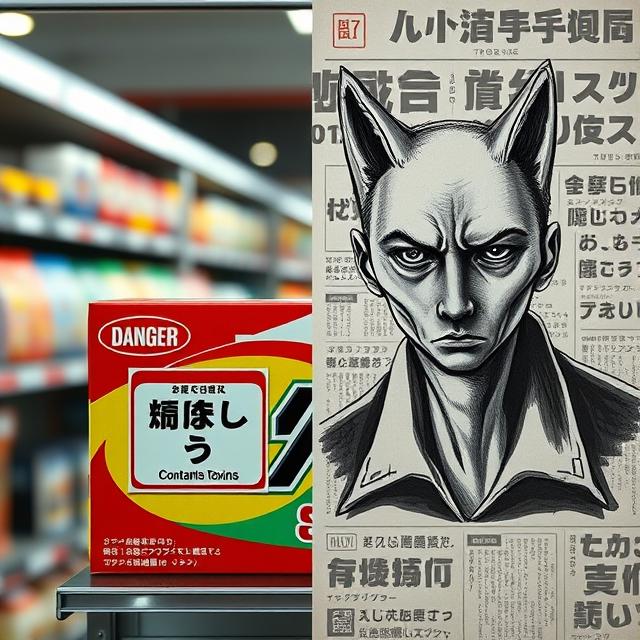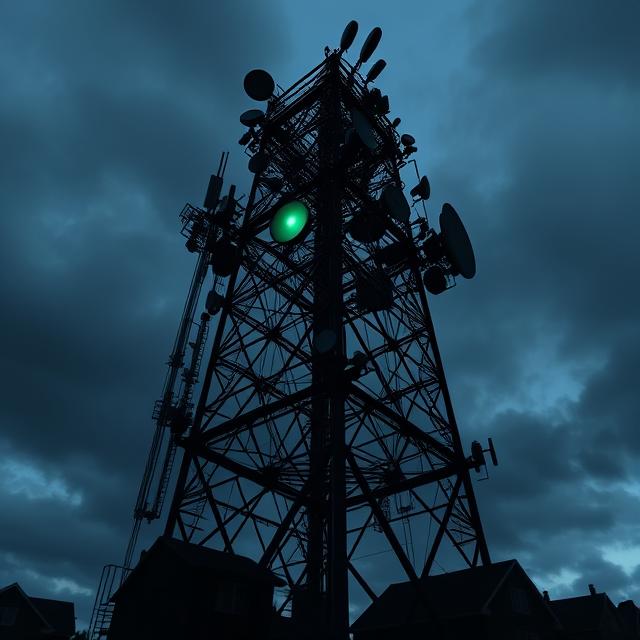In the hyper-organized and famously safe society of 1980s Japan, a criminal syndicate emerged that would terrorize the nation for 17 months, holding massive food corporations hostage, poisoning consumer goods, and running circles around the largest police force in the country. They were a ghost in the machine, a phantom menace who called themselves “The Monster with 21 Faces.” Their campaign of corporate blackmail, public taunts, and random terror created a national crisis, cost companies hundreds of millions of dollars, and left behind a legacy as Japan’s most notorious and brilliantly bizarre unsolved crime.
The Abduction That Started It All
The saga began on the night of March 18, 1984. Two masked men, armed with guns, broke into the home of Katsuhisa Ezaki, the president of the major confectionery company, Ezaki Glico. They overpowered his wife and daughter, found Ezaki bathing with his other children, and dragged him, naked and terrified, from his home. He was taken to a remote warehouse and held for a ransom of one billion yen (roughly $4.2 million at the time) and 100 kilograms of gold bullion.
But three days later, before any ransom could be paid, Ezaki managed to escape his captors, fleeing from the warehouse in a stunning turn of events. For any other criminal, this would have been a catastrophic failure. For the group that would soon adopt a theatrical new identity, it was merely the opening act.
The Monster with 21 Faces
Weeks after the failed kidnapping, the true campaign of terror began. A letter, written with a flair for the dramatic and a sharp, mocking wit, arrived at a police station. It was from the culprits, who had now given themselves a name borrowed from a famous Japanese detective novel: Kaijin Nijūichi Mensō, or “The Monster with 21 Faces.”
The Monster announced that they had laced Glico-brand candies with potassium cyanide and placed them on store shelves across the country. A nationwide panic erupted. Glico products were immediately pulled from circulation, costing the company over $21 million and resulting in the temporary layoff of hundreds of employees. The Monster’s reign had begun, and their methods were unlike anything Japan had ever seen.
They communicated not just with the companies, but with the public and the police, sending dozens of taunting letters to major news outlets. The letters were masterpieces of psychological warfare, written in a folksy, almost playful Osaka dialect. They mocked the police for their incompetence, offered clues to their own identities (which were always red herrings), and reveled in their newfound infamy. “Dear dumb police officers,” one letter began, “Don’t lie. All crimes begin with a lie.”
The Monster’s campaign of extortion and terror expanded beyond Glico, targeting other major food companies, including Marudai Ham, House Foods, and, most famously, Morinaga. In October 1984, they sent letters to news outlets declaring that they had poisoned 21 packages of Morinaga sweets. Police fanned out across the country and located the poisoned products, many of which were marked with a sticker that read, “Danger: Contains Toxins. You’ll get sick if you eat this. The Monster with 21 Faces.” The public display was audacious, a clear demonstration of their ability to strike anywhere, anytime.
The Fox-Eyed Man and a Botched Investigation
The massive police investigation, involving over 1.3 million officers over the course of the saga, was plagued by frustration and near-misses that only served to embolden the Monster.
The most famous close call occurred during a money drop arranged with House Foods. Investigators were instructed to leave a suitcase of money in a car at a highway rest stop. An officer, disguised as a company employee, sat in the car and waited. He noticed a man watching him from a distance, a man who police described as having “eyes like a fox.” The “Fox-Eyed Man,” as he came to be known, seemed to realize he was being watched and simply walked away, vanishing before the officer could move in. A composite sketch of this man would become the public face of the investigation, plastered across the country, but he was never identified.
The pressure on the police was immense, and it led to tragedy. In August 1985, after another failed attempt to capture the Monster during a money drop, Shiga Prefecture Police Superintendent Yamamoto committed suicide by setting himself on fire. His death was a profound national shock, seen as the ultimate act of taking responsibility for the force’s failures.
The Monster’s Final Bow
Just days after Superintendent Yamamoto’s suicide, the Monster with 21 Faces sent its final, shocking letter to the media. Titled “We decided to forget about torturing food-making companies,” the letter was a bizarre farewell. “Yamamoto of Shiga Prefecture Police died. How stupid of him! We’ve got no friends or secret hiding place in Shiga. It’s Yoshino or Shikata who should have died,” it read, referencing other police officials. “What have they been doing for as long as one year and five months? Don’t let bad guys like us get away with it.”
The letter concluded with a declaration: “We are bad guys. That means we’ve got more to do other than torturing companies. It’s fun to lead a bad man’s life. The Monster with 21 Faces.”
And with that, they were gone. The letters stopped. The poisonings ceased. The Monster with 21 Faces vanished as mysteriously as they had appeared, leaving behind a legacy of fear, chaos, and one of the world’s most compelling unsolved crimes.
An Enduring Mystery
The statutes of limitation on all crimes related to the Glico-Morinaga case have long since expired. The identity of the Monster with 21 Faces remains a complete mystery. Was it a disgruntled employee with an inside knowledge of the food industry? A radical anti-consumerist group? A ring of corporate spies? Or simply a group of brilliant, sociopathic pranksters who got a thrill from manipulating an entire nation?
The case exposed vulnerabilities in Japan’s food distribution systems and forever changed corporate security. It remains a fixture in Japanese pop culture, a testament to a time when a faceless, theatrical villain held the country in its thrall, using nothing more than a typewriter, a cyanide bottle, and a wickedly sharp sense of humor. The Monster promised that it was “fun to lead a bad man’s life,” and for 17 terrifying months, they proved it, before taking their final bow and disappearing back into the crowd, leaving only questions behind.
Want to explore the shadows even deeper? For more chilling cases like this, visit SinisterArchive.com, where the legends are real.




